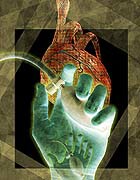
TUESDAY, Dec. 28 (HealthDay News) — 2010 was a year that enjoyed continued advances in the treatment of heart disease and stroke, according to the American Heart Association/American Stroke Association.
“We have come far in the past decade, reducing heart disease deaths by more than 27 percent and stroke deaths by more than 44 percent,” American Heart Association president Dr. Ralph Sacco, chairman of the department of neurology for the Miller School of Medicine at University of Miami, said in a news release.
“But we know there is still much to be done in improving the lives of heart disease and stroke patients — and more importantly, in preventing these devastating diseases in the first place. Scientific research will help us lead the way,” he said.
The top 10 advances in heart disease for 2010 are:
- More individually tailored treatment for people with type 2 diabetes to reduce their risk of heart disease.
- Minimally invasive options — such as transcatheter aortic valve implantation — to replace a blocked aortic valve in high-risk patients who might not be able to withstand open-heart surgery.
- Improving ways to reverse sudden cardiac arrest, such as using adult CPR with chest compressions alone.
- More alternatives for reducing stroke risk in patients with atrial fibrillation, such as new anti-clotting drugs like dabigatran (Pradaxa) that are easier to manage than the standard drug warfarin (Coumadin).
- Improving outcomes in heart failure patients with new types of implantable cardioverter defibrillators that can restore normal heart rhythms.
- New procedures for infants with congenital heart disease, which may replace the need for a heart transplant.
- Better options for anti-clotting therapy, including a new drug, ticagrelor (Brilinta), which may be a better anti-clotting medication than clopidogrel (Plavix) for patients undergoing surgery.
- Experimental advances in stem cell therapy, which may help grow new heart muscle and that may eventually improve outcomes in heart failure patients.
- Increasing scientific evidence for lifestyle changes — including weight loss through exercise and an improved diet with less sodium — which can help prevent heart disease.
- Getting more hospitals to follow AHA guidelines, which reduces racial and ethnic disparities in cardiac care.
The top 10 advances in stroke for 2010 are:
- Clot-busting drugs found most effective in the first 4.5 hours after stroke and perhaps harmful afterward.
- Scientists identified a new way the body clears clots from brain vessels, thus restoring blood flow.
- Opening narrowed neck arteries by surgery or stent has similar risks and benefits, but surgery appears better for those over 70.
- New AHA hospital guidelines improve outcomes of stroke patients.
- Researchers identified the 10 major risk factors for a stroke and found that reducing blood pressure and smoking, and encouraging physical activity and a healthy diet could significantly cut the number of strokes around the world.
- An international study found that ultrasound can detect silent micro-clots in patients at risk for stroke and help determine which patients might benefit from surgery or stenting.
- Robot-assisted therapy can improve arm function after stroke, although not more than intensive care from a physical therapist.
- Patients with the genetic disorder Ehlers-Danlos syndrome are at risk for brain bleeds, but the risk can be managed with the use of beta-blockers, which lower blood pressure.
- Dramatically lowering blood pressure early after a hemorrhagic stroke can prevent the bleeding from spreading, thereby improving outcomes.
- Physical activity, even walking and other moderate exercise, reduces the risk of stroke in women.
More information
For more information on heart disease and stroke, visit the American Heart Association.

